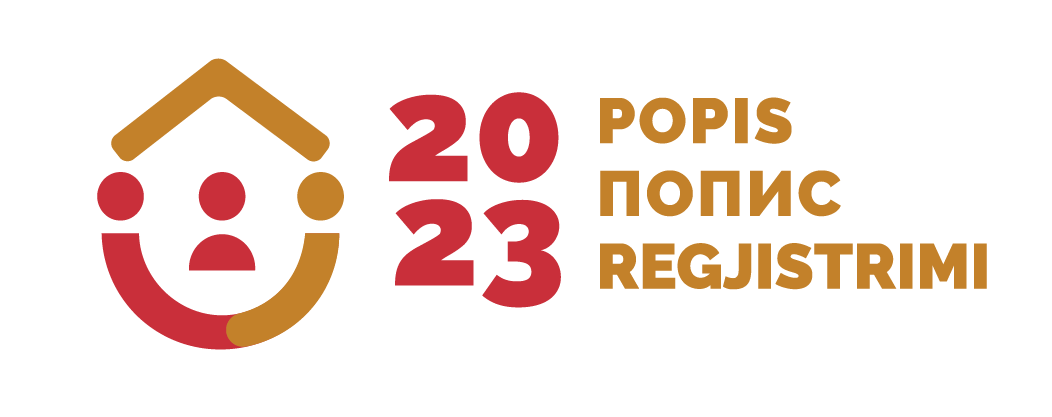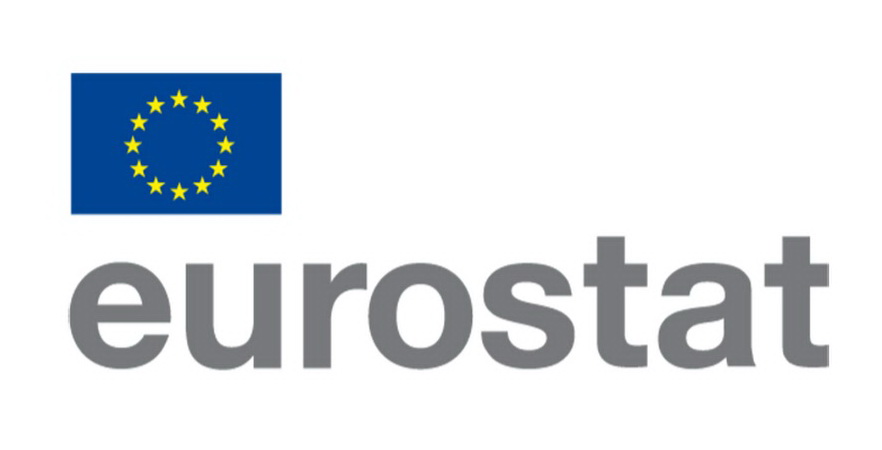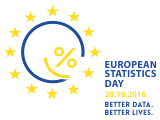| Category: |
Multi - domain statistics |
| Area: |
Innovation activities of enterprises |
| Survey / data collection: |
Innovative activities of enterprises |
Note: For any question on metadata, please contact MONSTAT metadata support.
| 1. Contact Vrh |
| 1.1. Contact organization: |
Statistical Office of Montenegro - MONSTAT |
| 1.2. Contact organization unit: |
Statistics of Innovation, Household Consumption and ICT Survey Department |
| 1.2. Contact organization unit: |
IV Proleterske 2, 81000 Podgorica, Montenegro |
| 2. Metadata update Top |
| 2.1. Metadata last certified: | 2/12/2022 |
| 2.2. Metadata last posted: | 14 December 2022 |
| 2.3. Metadata last update: | 2/12/2022 |
| 3. Statistical presentation Top |
| 3.1. Data description: | The purpose of innovation statistics is to obtain data on innovative activities in industry and
selected services, on the number of enterprises engaged in the process and/or production of
innovations in the observed period, on enterprises that have ongoing or no innovative activities,
how many funds have been invested in innovative activities, cooperation with other enterprises,
institutions and users of innovations in development, as well as the effects of innovative activities. |
| 3.2. Classification system: | NACE Rev. 2 |
| 3.3. Sector coverage: | Statistical units are enterprises that have 10 or more persons employed from certain sectors
according to NACE Rev. 2:
Section B - "Mining and quarrying";
Section C - "Manufacturing";
Section D - "Electricity, gas, steam and air conditioning supply";
Section E - "Water supply, sewerage, waste management and remediation activities";
Section F - "Construction";
Section G - "Wholesale and retail trade; repair of motor vehicles and motorcycles";
Section H - "Transport and storage";
Section I - "Accommodation and food service activities";
Section J - "Information and communication";
Section L - "Real estate activities";
Section M - "Professional, scientific and technical activities";
Section N - "Administrative and support service activities"; |
3.4. Statistical concepts and
definitions: | Innovations are new or improved products (goods or services) or processes that meet three
requirements:
1. Differs significantly from products previously offered on the market or processes used
within the enterprise.
2. Implemented: on the market or in use by the enterprise.
3. At a minimum it is new to the enterprise. An innovation does not have to be ?new to
the market? nor ?new to the world?.
Innovation activities include all developmental, financial and commercial activities, undertaken
by a business, that are intended to or result in an innovation for the business.
A product innovation is a new or improved good or service that differs significantly from the
enterprises previous goods or services and that has been introduced on the market.
A business process innovation is a new or improved business process for one or more business
functions (production process, distribution method, product support activity, etc.) that differs
significantly from the enterprises previous business processes and that has been brought into use
in the enterprise. Innovation should have a visible impact on the level of productivity,
product/service quality, production/distribution cost. Introduced procedures that enabled the
introduction of product innovations are also counted as process innovations. |
| 3.5. Statistical unit: | Statistical units are enterprises that have 10 or more persons employed from certain sectors
according to NACE Rev 2. |
| 3.6. Statistical population: | The sampling frame is based on the data from the Business Register of the Statistical Office of Montenegro, which includes all enterprises from certain sectors according to the NACE Rev. 2 classification that have 10 or more persons employed. |
| 3.7. Reference area: | Montenegro |
| 3.8. Time coverage: | From 2021 |
| 3.9. Base period: | Not relevant. |
| 6. Institutional mandate Top |
6.1. Legal acts and other
agreements: | The Law on Official Statistics and Official Statistical System (Official Gazette of Montenegro No 18/12 and 47/19) defines provisions for collection, processing, and dissemination of data. The Law provides to the Statistical Office legal powers to collect and access the data necessary for the implementation of Programme and Annual Plan. The Law gives a priority to the use of administrative data and right of access to individual data that are a result of survey of other official statistical producers. As an annex to legal provisions, Statistical Office has signed several memoranda on cooperation with administrative data providers. |
| 6.2. Data sharing: | Signed agreement on cooperation with the official statistical producer Ministry of science. |
| 7. Confidentiality Top |
| 7.1. Confidentiality - policy: | Articles 53-60 of the Law on Official Statistics and Official Statistical System (Official Gazette of Montenegro No 18/12 and 47/19) provide a framework for protection, use, and transmission of confidential data. MONSTAT has produced two comprehensive rulebooks that cover the procedures for individual data protection as well as keeping individual records. With purpose of the meeting legal framework on functioning of security system and statistical confidentiality there was adopted the Rulebook on Keeping Statistical Data by which Manner, Time, Technical Conditions and Organization of Statistical Data Storage to Prevent Their Destroying, Misappropriation, and Unauthorized Use is Regulated as well as the Rulebook on Contents and Manner of Keeping Records on Users of Individual Statistical Data by which contents and manner of keeping records on users of individual statistical data is regular. Pursuant to the Article 59, an access to the confidential data is limited to persons performing duties and tasks of official statistical producer and up to the stage the data are necessary for official statistical production. Persons that performs duties and tasks within official statistical producers must sign the statement on respecting the principle of confidentiality. Law on Official Statistics and Official Statistical System is aligned with the Regulation No 223/2009 and the Regulation (EU) 2015/759 from 29 April 2015 that also regulate confidentiality provisions. The Government of Montenegro adopted the Statement on Commitment of Confidence in Official Statistics (Commitment of Confidence). |
7.2. Confidentiality - data
treatment: | Data are published as aggregate at the level of municipality as lowest level. The rules for accessing micro data are defined by Law on Official Statistics and Official Statistical System of Montenegro, Articles 58 and 59. |
| 8. Release policy Top |
| 8.1. Release calendar: | The Law on Official Statistics and Official Statistical System (Official Gazette of Montenegro No 18/12 and 47/19) stipulates that official statistical producers prepare, update, and publish Statistical Release Calendar. It is published on the website of Statistical Office not later than 20 December for the next year, for all official statistical producers that includes date of releasing statistical data. Any change in date of releasing in the Calendar is published in advance in accordance with the Procedure on Unplanned Revisions. |
| 8.2. Release calendar - access: | https://www.monstat.org/cg/page.php?id=12&pageid=12 |
| 8.3. User access: | General aim of official statistical producer is to meet the needs of users, and to make an access to statistical data to users in an understandable manner, simultaneously and under the same conditions. Statistical Office is obliged to produce and disseminate official statistics in objective, transparent and professional manner, so that all users are equally treated. |
| 10. Accessibility and clarity Top |
| 10.1. News release: | / |
| 10.2. Publications: | / |
| 10.3. Online database: | Not available. |
| 10.4. Micro-data access: | The Law on Official Statistics and Official Statistical System (Official Gazette of Montenegro No 18/12 and 47/19) regulates rules under which external users can obtain an access to individual data for needs of research. Article 58 defines types of scientific and research organizations that can obtain such data. Providing individual data without identifier is possible only upon a written request of scientific and research institutions, with purpose of performing scientific and research activities as well as international statistical organizations and statistical producers from other countries. Research entity signs the agreement with Statistical Office, and it signs the statement on respecting the confidentiality principle. Official statistical producers keeps a separate records on users and purpose of using the statistical data given to these users. |
| 10.5. Other: | Not available. |
10.6. Documentation on methodology:
domain: | The Eurostat methodology is used to conduct survey on the innovative activities of enterprises. The survey of innovation activities of enterprises is harmonized with the Implementing Regulation
(EU) no. 995/2012 and the Oslo Manual (4th edition). |
| 10.7. Quality documentation: | The Law on Official Statistics and Official Statistical System (Official Gazette of Montenegro No 18/12 and 47/19) defines the commitment to quality which ensures that official statistical producers in Montenegro work and cooperate in accordance with the international principles of statistical system quality. Development Strategy and Programme of Official Statistics for 2019-2023 define the objectives of development. One of objectives is Further implementation of official statistics quality code. Pursuant to the ESS Quality Declaration, Article 338 of the Contract on EU Functioning, Regulation 759/2015 and Regulation 223/2009 as well as European Statistical Code of Practice, the following documents are in adoption procedure: 1. Quality Strategy of Statistical Office, 2. Guide for Implementation of Quality Strategy in Statistical Office 3. Implementation Plan Quality reports for statistical surveys are available on MONSTAT website: https://www.monstat.org/eng/page.php?id=1425&pageid=1425 |
| 11. Quality management Top |
| 11.1. Quality assurance: | Statistical Office has chosen the implementation of elements of TQM (Total Quality Management) model that foster development and improvement of functioning of: - institution, - official statistical result production, and - individual. Within middle-term deadline, Statistical Office has chosen the TQM implementation through the following objectives: 1. Strong commitment to users and other interested parties, 2. Quality statistical processes and products, 3. Professional orientation of staff members, 4. Constant improvements, 5. Reduction of overburden of reporting units. |
| 11.2. Quality assesment: | Not available. |
| 12. Relevance Top |
| 12.1. User needs: | ternational users: - Eurostat. National beneficiaries: - Ministry of Science and Ministry of Economic Development; - Students; - Researchers; - The media. |
| 12.2. User satisfaction: | The Statistical Office has adopted the Quality Management Strategy, the Guidebook to the Implementation of the Quality Management Strategy, as well as the Plan for the Implementation of the Quality Policy. In order to measure the degree to which fulfills obligations towards users and within the new quality policy, the Statistical Office conducted User satisfaction survey. Data collection was carried out through a web survey, in the period from 1 September to 20 October, 2017. The results of the survey are available on the Statistical Office website, link: http://www.monstat.org/userfiles/file/KVALITET/Izvjestaj%20o%20zadovoljstvu%20korisnika%20eng.pdf. |
| 12.3. Completeness: | Collected data are in accordance with the methodological manual for innovative activities of enterprises surveys, which is defined by EU and Eurostat. |
| 13. Accuracy and reliability Top |
| 13.1. Overall accuracy: | |
| 13.2. Sampling error: | Sample errors occur due to the analysis of the sample of a part of population. Sample error size may be controlled by the size and design of the sample. Significan sample errors may lead to the unreliable data when related to some smaller domains (levels or data groups) that have insufficient number of units in the sample. |
| 13.3. Non-sampling error: | Non sampling errors are following: over-coverage, under-coverage, measurement errors, processing errors, editing, imputation, and non-response errors. |
| 14. Timeliness and punctuality Top |
| 14.1. Timeliness: | |
| 14.2. Punctuality: | Deadlines of dissemination of the innovative activities of enterprises data at the website are defined in the Statistical Release Calendar. Indicator TP3 (punctuality) is 0, there is no difference between the planned and the actual publication. That means that the Release is published in accordance with Statistical Release Calendar. |
| 15. Coherence and Comparability Top |
15.1. Comparability -
geographical: | The data at the level of Montenegro are comparable to the data of the countries that are conducted in the survey on Innovative Activities of Enterprises according to the Eurostat methodology in accordance with the Implementation Regulation (EU) no. 995/2012. |
| 15.2. Comparability over time: | / |
15.3. Coherence - cross
domain: | / |
| 15.4. Coherence - internal: | / |
| 17. Data revision Top |
| 17.1. Data revision - policy: | Statistical Office has adopted the revision policy and it is available on the website http://www.monstat.org/eng/page.php?id=1411&pageid=1411 |
| 17.2. Data revision - practice: | Published data are considered final except in the case of methodological changes and the introduction of new classifications, as a result which are subject to revision. |
| 18. Statistical processing Top |
| 18.1. Source data: | Survey on the Innovative Activities of Enterprises is a sample-based survey. |
18.2. Frequency of data
collection: | For the period on 2018 - 2020. |
| 18.3. Data collection: | Paper form. |
| 18.6. Adjustment: | The survey is done in accordance with the Eurostat methodology and is in line with international standards. As for the adjustment of national needs, there is no harmonization, because from this study received a wide range of answers and information that meet the national interests. |







